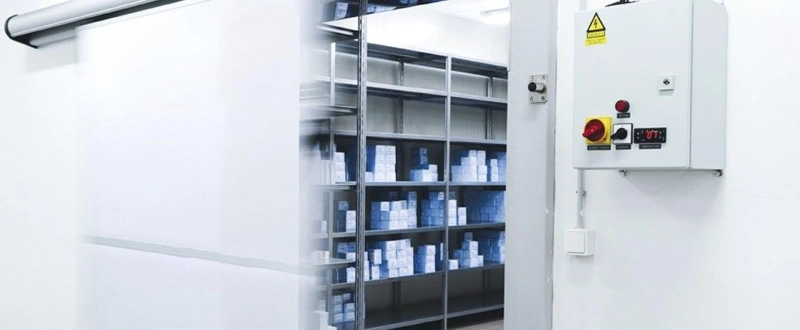In industries such as pharmaceuticals, biotechnology, food production, and cosmetics, controlled environmental testing is critical to guarantee product quality and shelf life. One of the core components enabling this is the stability chamber, a specialized piece of equipment designed to simulate various environmental conditions such as temperature, humidity, and sometimes light exposure. However, to ensure the accuracy and reliability of these chambers, Stability Chamber Validation is a mandatory and essential process.
What is Stability Chamber Validation?
Stability Chamber Validation is the systematic process of verifying that a stability chamber performs consistently and reliably within specified parameters. The validation process confirms that the chamber can maintain the environmental conditions required for stability testing over extended periods, typically weeks or months, without significant deviation.
Validation is crucial because the integrity of stability studies depends directly on the precision of the environmental conditions maintained by the chamber. Any fluctuations or inaccuracies can lead to misleading data, potentially affecting product safety, efficacy, and regulatory compliance.
Why is Stability Chamber Validation Important?
The importance of Stability Chamber Validation cannot be overstated. Stability studies provide evidence that a product will remain within its specification limits throughout its intended shelf life under normal or accelerated environmental conditions. Regulatory authorities such as the FDA, EMA, and ICH require stringent validation protocols to ensure that environmental chambers used in these tests meet the required standards.
Some key reasons for stability chamber validation include:
- Compliance: Meeting regulatory requirements and industry standards (e.g., ICH Q1A(R2), USP) demands documented validation of stability chambers.
- Product Quality Assurance: Ensures the product’s performance, potency, and safety over time under defined environmental conditions.
- Reliability: Guarantees that temperature, humidity, and other environmental controls operate consistently within predefined limits.
- Data Integrity: Validated chambers ensure accurate, trustworthy stability data, critical for product registration and market approval.
The Stability Chamber Validation Process
Stability chamber validation typically involves several phases:
- Installation Qualification (IQ): Verifies that the chamber is installed according to manufacturer specifications and regulatory requirements. Documentation includes equipment location, utilities, and initial performance.
- Operational Qualification (OQ): Confirms that the chamber operates as intended across the entire range of set points. Tests are conducted to verify temperature uniformity, humidity control, alarms, and control systems.
- Performance Qualification (PQ): Demonstrates that the chamber consistently performs within specifications under real operating conditions over a defined period. This phase often involves placing calibrated sensors at multiple points inside the chamber and recording data to verify uniformity and stability.
Key Parameters in Stability Chamber Validation
Several environmental parameters are monitored and validated to ensure chamber performance:
- Temperature Control and Uniformity: Chambers must maintain precise temperature control, typically within ±2°C or tighter, depending on the test requirements. Uniformity ensures all parts of the chamber maintain consistent temperatures without hot or cold spots.
- Humidity Control: Many stability tests require controlled humidity, often ranging from 20% to 80% relative humidity (RH). Maintaining stable RH is critical for products sensitive to moisture.
- Airflow and Circulation: Proper airflow ensures uniform temperature and humidity distribution within the chamber, preventing stratification.
- Alarm Systems: Validation confirms that alarms for deviations in temperature or humidity are functional and properly triggered.
Tools and Technologies for Stability Chamber Validation
Modern stability chambers are often equipped with data loggers and monitoring software that facilitate continuous environmental data collection. During validation, calibrated sensors and data acquisition systems record temperature and humidity at multiple locations within the chamber. This comprehensive data helps verify uniformity and stability, ensuring compliance with regulatory expectations.
Challenges and Best Practices
One challenge in Stability Chamber Validation is ensuring long-term performance stability, especially when chambers are used continuously over months or years. Regular re-validation or periodic verification is recommended to maintain confidence in the chamber’s performance.
Best practices include:
- Using high-precision calibrated sensors traceable to national standards.
- Ensuring thorough documentation throughout the validation lifecycle.
- Conducting validation under conditions that simulate actual product testing environments.
- Implementing preventive maintenance schedules to sustain chamber performance.
Conclusion
Stability Chamber Validation is a critical process that underpins the reliability and accuracy of environmental stability testing. It provides assurance that temperature, humidity, and other controlled conditions are maintained consistently, allowing companies to generate dependable data on product shelf life and quality. For regulated industries, proper validation not only meets compliance requirements but also safeguards public health by ensuring products perform safely and effectively throughout their lifecycle.
By investing time and resources into rigorous stability chamber validation protocols, organizations can avoid costly errors, regulatory setbacks, and compromised product integrity—ultimately supporting quality assurance and consumer trust.


